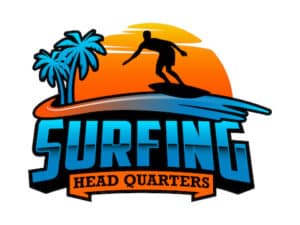
Balance board/Indo board may improve balance on an unstable surface. However, it’s unclear if the skill acquired from the Indo board will translate into surfing.
I have been surfing for over ten years but have never tried an Indo or Balance board. It’s about time I tried one myself and gave an honest perspective.
How does the Indo Board work?
Indo or Balance board has a small skateboard-like platform on a free-moving roll. It makes you work on your balance by making constant adjustments. It claims it helps you to surf better by improving your balance. Let’s look into whether Indo board can help you improve your surfing.
I have purchased a balance board that looked similar to the Indo board, and the mechanics are the same.
The following is based on the first impression of the balance board after trying for around 30 minutes.
Similarities
Stance on surfing and Indo board are similar. I felt like I was standing on a skateboard, but I felt quite insecure, knowing I was on a roll.
Differences.
Differences struck me more than similarities. How the board moves on top of the rolling pin is nothing like riding a surfboard. But don’t disregard the balance/indo board just yet.
After trying the Balance / Indo board, Here are reasons why I think the skillset may not transfer much to actual surfing.
Firstly, surfing is more about getting the timing and position right with waves rather than having a steady balance.
The balances are challenged, especially when the water surface is irregular, such as whitewash or bumpy waves due to wind. However, once a board gets going, the surfboard is supported by a ‘lift’ and is very steady.
It’s not like you are standing on a board on static water where the surfboard wobbles all the time.
Secondly, The Balance/Indo board is quite uni-directional. Meaning it only tilts backwards and forwards. In surfing, however, forward and backward tilt control is quite rare and minimal amount.
When we learn a new task, it’s very task-specific, meaning we get better at what we are training for. This is why I am sceptical of skill transfer.
For the Balance board, I tried to put the board sideways to try it out, but it seemed impossible, nor was it similar to surfing.
Who Should Consider The Indo Board?
Balance/Indo board can be a reasonable option for people who want a fun way of practising balancing on unpredictable surfaces, especially those who have limited access to skateboarding or surf-skate.
Indo board provides a fun balance exercise that trains your reflex-like muscle control and teaches you to overcome discomfort on a moving surface. After actually trying one myself, I was more convinced that this is unique and fun exercise equipment to have at home.
Furthermore, the balance/Indo board will help you practice standing in a surfing posture while having fun. It will also teach you weight transfer awareness, and training different ankle and foot muscles is also a great plus.
However, if you want something closer to surfing, surf-skate may be a better bet.
Pro Tip: Of all non-surfing exercises, focusing on paddling will be the best investment to improve your surfing. Most surfing time is spent paddling or waiting for waves. Standing and riding waves are a small part. Click the following link to learn about improving paddling and catching more waves.
Horseradish is another piece of equipment that might be helpful for balance and walking on the board.
If I have not made myself clear before, surfing is the best practice for surfing. If you want to learn about nose riding and cross-stepping, Read here.
What Muscles Does an Indo Board Work On?
The main muscles that get worked on indo boards are
- Glut, quads and calf for standing in a semi-squatted posture.
- small ankle and foot muscles to constantly adjust the balance.
- Some core muscles in the trunk for shifting weight from side to side.
There are different ways to train these muscles. For big muscle groups like the glutes, quads, and calves, it’s about doing exercises that build endurance. This involves isometric strengthening, where the muscle or joint stays still, and the muscles work long. The core and trunk muscles are trained similarly.
For the smaller muscles in the ankle and foot, it’s more about quick movements. These muscles get a workout during Indo board training, which helps with a person’s balance.

